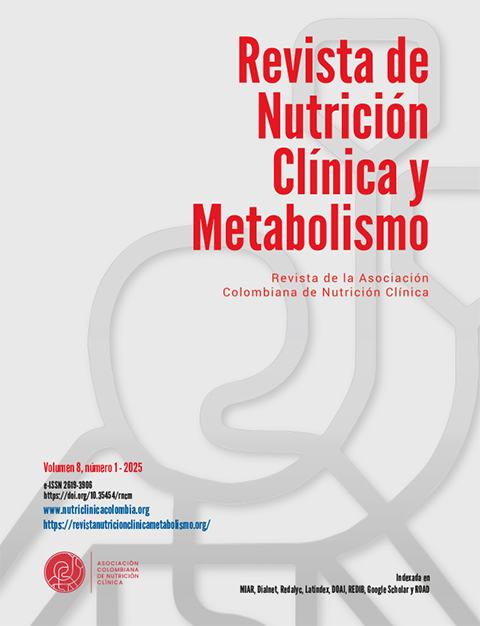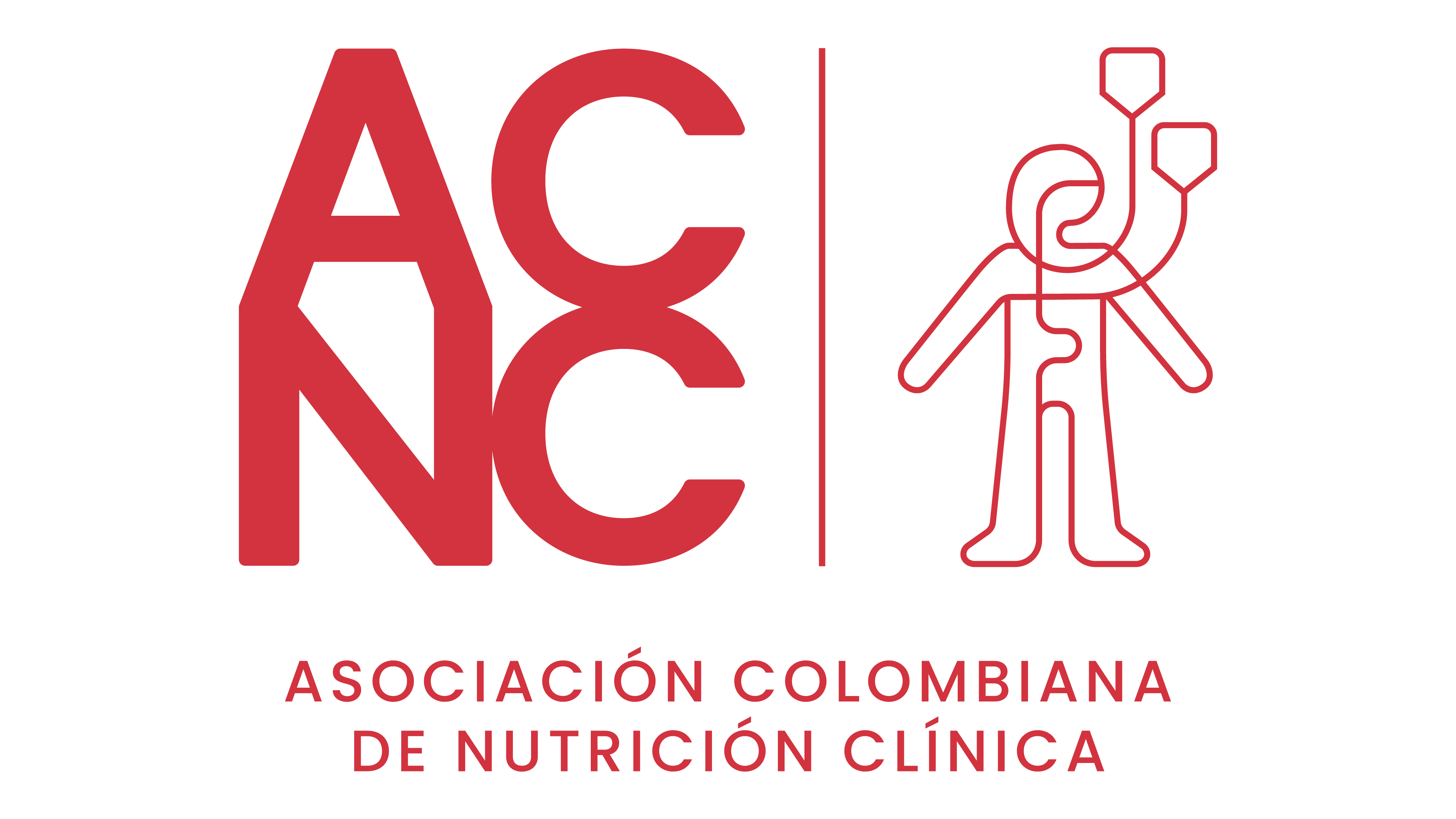Beneficios de la nutrición enteral artesanal en problemas gastrointestinales en niños con parálisis cerebral: una revisión de alcance
DOI:
https://doi.org/10.35454/rncm.v8n1.687Palabras clave:
nutrición enteral, parálisis cerebral, enfermedad por reflujo gastroesofágico, constipación, calidad de vida, revisión de alcanceResumen
Introducción: la parálisis cerebral (PC) es un grupo de trastornos permanentes que afectan el desarrollo del movimiento y la postura, limitando significativamente la capacidad para llevar a cabo actividades cotidianas. Los problemas gastrointestinales, como la enfermedad por reflujo gastroesofágico (ERGE) y la constipación, son frecuentes en niños con PC y afectan tanto la calidad de vida como el estado nutricional. La nutrición enteral artesanal (NEA) ha emergido como una alternativa prometedora a las fórmulas comerciales para abordar estos problemas. Objetivo: evaluar la evidencia existente sobre los beneficios de la NEA en la mejora de problemas gastrointestinales en niños con PC, destacando brechas de conocimiento y oportunidades para futuras investigaciones. Métodos: se realizó una revisión de alcance siguiendo la metodología PRISMA-ScR. Se incluyeron estudios publicados entre 2014 y 2024 en inglés y español, centrados en niños con PC que recibieron NEA a través de sonda de gastrostomía. Se analizaron ensayos controlados aleatorizados, estudios de cohortes, reportes de casos, revisiones sistemáticas y literatura gris. Los resultados se extrajeron y clasificaron según su impacto en problemas gastrointestinales como ERGE, constipación, vómitos y dolor abdominal. Resultados: de 182 artículos identificados, 10 cumplieron con los criterios de inclusión. La NEA demostró beneficios significativos, como menor incidencia de ERGE y constipación (p = 0.04), reducción de síntomas gastrointestinales en un 73%, y mejor tolerancia al volumen alimentario. Además, los cuidadores reportaron mejoras en la percepción del proceso de alimentación y en el bienestar psicosocial del paciente y la familia. Conclusión: la NEA es una alternativa eficaz y accesible para mejorar los problemas gastrointestinales en niños con PC, además de ofrecer beneficios psicosociales significativos. Sin embargo, la falta de guías estandarizadas y evidencia robusta a largo plazo subraya la necesidad de investigaciones futuras que consoliden su implementación segura.
Descargas
Citas
Rosenbaum P, Paneth N, Leviton A, Goldstein M, Bax M, Damiano D, et al. A report: the definition and classification of cerebral palsy April 2006. Dev Med Child Neurol. 2007; 109: 8-14. doi:10.1111/j.1469-8749.2007.tb12610.x
McIntyre S, Goldsmith S, Webb A, Ehlinger V, Hollung SJ, McConnell K, et al. Global prevalence of cerebral palsy: A systematic analysis. Dev Med Child Neurol. 2022; 64(12): 1494-506. doi: 10.1111/dmcn.15346
Del Giudice E, Staiano A, Capano G, Romano A, Florimonte L, Miele E, et al. Gastrointestinal manifestations in children with cerebral palsy. Brain Dev. 1999; 21(5): 307-11. doi: 10.1016/s0387-7604(99)00025-x
Gangil A, Patwari AK, Bajaj P, Kashyap R, Anand VK. Gastroesophageal reflux disease in children with cerebral palsy. Indian Pediatr. 2001; 38(7): 766-70.
Veugelers R, Benninga MA, Calis EAC, Willemsen SP, Evenhuis H, Tibboel D, et al. Prevalence and clinical presentation of constipation in children with severe generalized cerebral palsy. Dev Med Child Neurol. 2010; 52(9): e216-21. Disponible en: doi: 10.1111/j.1469-8749.2010.03701.x
Romano C, van Wynckel M, Hulst J, Broekaert I, Bronsky J, Dall’Oglio L, et al. European Society for paediatric Gastroenterology, Hepatology and Nutrition guidelines for the Evaluation and treatment of gastrointestinal and nutritional complications in children with neurological impairment. J Pediatr Gastroenterol Nutr. 2017; 65(2): 242-64. doi: 10.1097/MPG.0000000000001646.
Köglmeier J, Assecaira I, Banci E, De Koning B, Haiden N, Indrio F, et al. The use of blended diets in children with enteral feeding tubes: A joint position paper of the ESPGHAN Committees of Allied Health Professionals and Nutrition. J Pediatr Gastroenterol Nutr. 2023; 76(1): 109-17. doi: 10.1097/mpg.0000000000003601
Tricco AC, Lillie E, Zarin W, O’Brien KK, Colquhoun H, Levac D, et al. PRISMA extension for scoping reviews (PRISMA-ScR): Checklist and explanation. Ann Intern Med. 2018; 169(7): 467-73. doi: 10.7326/m18-0850
Open Science Framework. Benefits of blenderized tube feeding in gastrointestinal problems in children with cerebral palsy: a scoping review. OFS [Internet]. 2024. [citado 11 de septiembre de 2024]. Disponible en: https://osf.io/2dg36/
Diamanti A, Capriati T, Mosca A, Trovato CM, Laureti F, Mazzoli B, et al. Neurological impairment and malnutrition in children: The role of home enteral nutrition in real life. Front Nutr. 2023; 10. doi: 10.3389/fnut.2023.1087603
Kernizan D, Mintz D, Colin M, Lee M, Yoakam L, Chen YP, et al. Outcomes and safety of blenderized tube feedings in pediatric patients: A single center’s experience. J Pediatr Gastroenterol Nutr. 2020; 71(4): e124-128. doi: 10.1097/mpg.0000000000002853
O’Connor G, Watson M, Van Der Linde M, Bonner RS, Hopkins J, Saduera S. Monitor gastrointestinal tolerance in children who have switched to an “enteral formula with food‐derived ingredients”: A national, multicenter retrospective chart review (RICIMIX study). Nutr Clin Pract. 2022; 37(4): 929-34. doi: 10.1002/ncp.10812
Dipasquale V, Diamanti A, Trovato CM, Elia D, Romano C. Real food in enteral nutrition for chronically ill children: overview and practical clinical cases. Curr Med Res Opin. 2022; 38(5): 831-5. doi: 10.1080/03007995.2022.2052514
Fraser LK, Bedendo A, O’neill M, Taylor J, Hackett J, Horridge K, et al. ‘YourTube’ the role of different diets in gastrostomy‐fed children: Baseline findings from a prospective cohort study. Dev Med Child Neurol. 2024; 66(6): 755-64. doi: 10.1111/dmcn.15799
Maddison J, Taylor J, O’Neill M, Cade J, Hewitt C, Horridge K, et al. Outcomes for gastrostomy‐fed children and their parents: qualitative findings from the ‘Your Tube’ study. Dev Med Child Neurol. 2021; 63(9): 1099-106. doi: 0.1111/dmcn.14868
Gallagher K, Flint A, Mouzaki M, Carpenter A, Haliburton B, Bannister L, et al. Blenderized enteral nutrition diet study: Feasibility, clinical, and microbiome outcomes of providing blenderized feeds through a gastric tube in a medically complex pediatric population. JPEN J Parenter Enteral Nutr. 2018; 42(6): 1046-60. doi: 10.1002/jpen.1049
Coad J, Toft A, Lapwood S, Manning J, Hunter M, Jenkins H, et al. Blended foods for tube-fed children: a safe and realistic option? A rapid review of the evidence. Arch Dis Child. 2017; 102(3): 274-8. doi:10.1136/archdischild-2016-311030
Hron B, Ng T, Voss S, Rosen R. Effect of blenderized tube feeds on gastric emptying: A retrospective cohort study. JPEN J Parenter Enteral Nutr. 2023; 47(5): 654-61. doi:10.1002/jpen.2513
Chandrasekar N, Dehlsen K, Leach ST, Krishnan U. Blenderised tube feeds vs. Commercial formula: Which is better for gastrostomy-fed children? Nutrients. 2022; 14(15): 3139. doi: 10.3390/nu14153139
Peers E, Boocock RC, Burn N. A systematic review examining the impact of blended diets on the gastrointestinal symptoms of people who are enterally fed. J Hum Nutr Diet. 2023; 36(3): 673-86. doi: 10.1111/jhn.13090
Brekke G, Raun AMT, Sørensen SB, Kok K, Sørensen JL, Born AP, et al. Nutrition and preparation of blenderized tube feeding in children and adolescents with neurological impairment: A scoping review. Nutr Clin Pract. 2022; 37(4): 783-96. doi: 10.1002/ncp.10853
Oftedal S, McCormack S, Stevenson R, Benfer K, Boyd RN, Bell K. The evolution of nutrition management in children with severe neurological impairment with a focus on cerebral palsy. J Hum Nutr Diet. 2025; 38(1): e13277. doi: 10.1111/jhn.13277
Dipasquale V, Aumar M, Ley D, Antoine M, Romano C, Gottrand F. Tube feeding in neurologically disabled children: Hot topics and new directions. Nutrients. 2022; 14(18): 3831. doi: 10.3390/nu14183831
Epp L, Blackmer A, Church A, Ford I, Grenda B, Larimer C, et al. Blenderized tube feedings: Practice recommendations from the American Society for Parenteral and Enteral Nutrition. Nutr Clin Pract. 2023; 38(6):1190-219. doi: 10.1002/ncp.11055
Descargas
Publicado
Cómo citar
Número
Sección
Licencia
Derechos de autor 2025 José Rodrigo Morgado Ramírez, Sara Rebeca Fajardo Compagny, Carolina Gonzalez Zavala, Humberto Jesus Borquez Arce

Esta obra está bajo una licencia internacional Creative Commons Atribución-NoComercial-CompartirIgual 4.0.




















